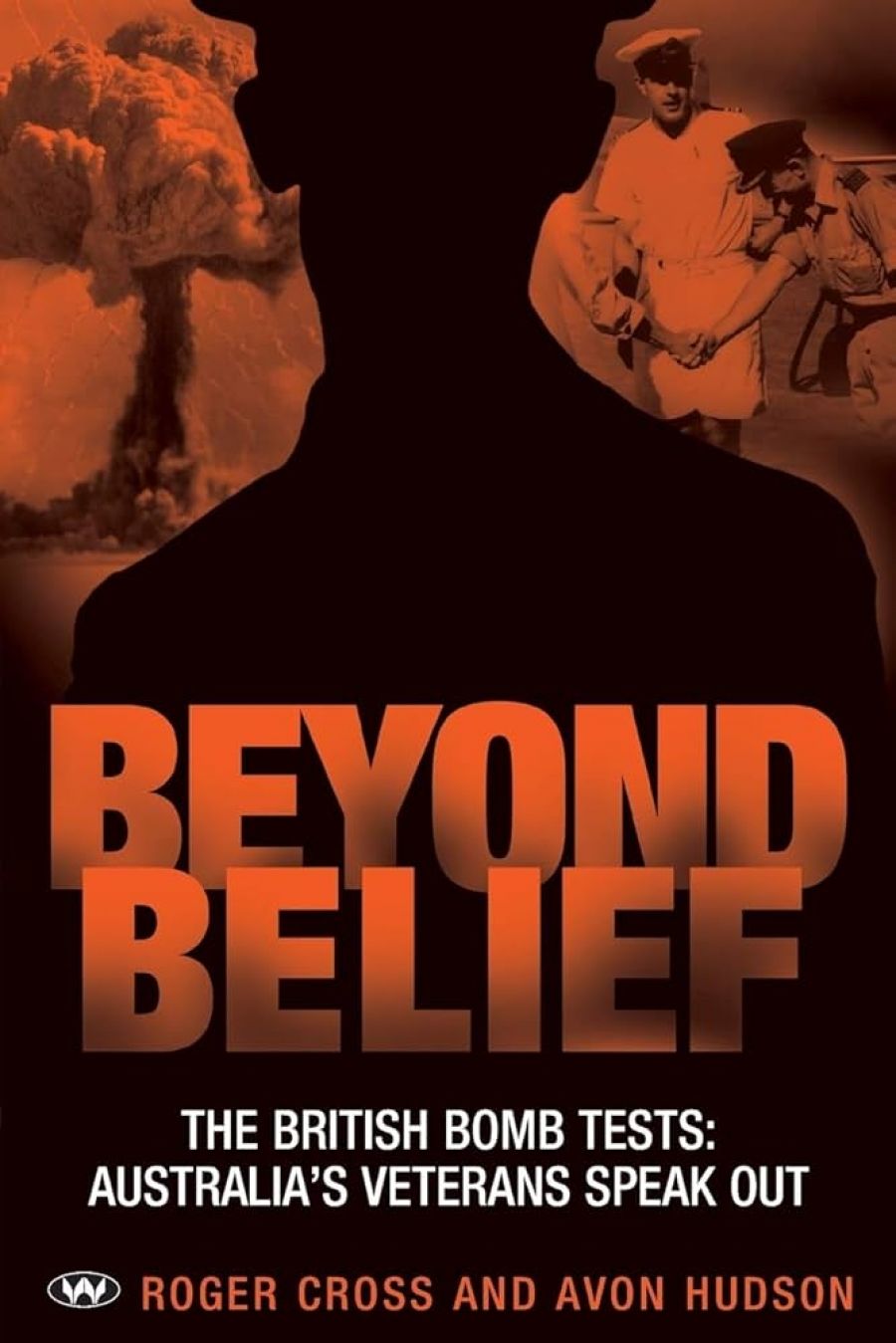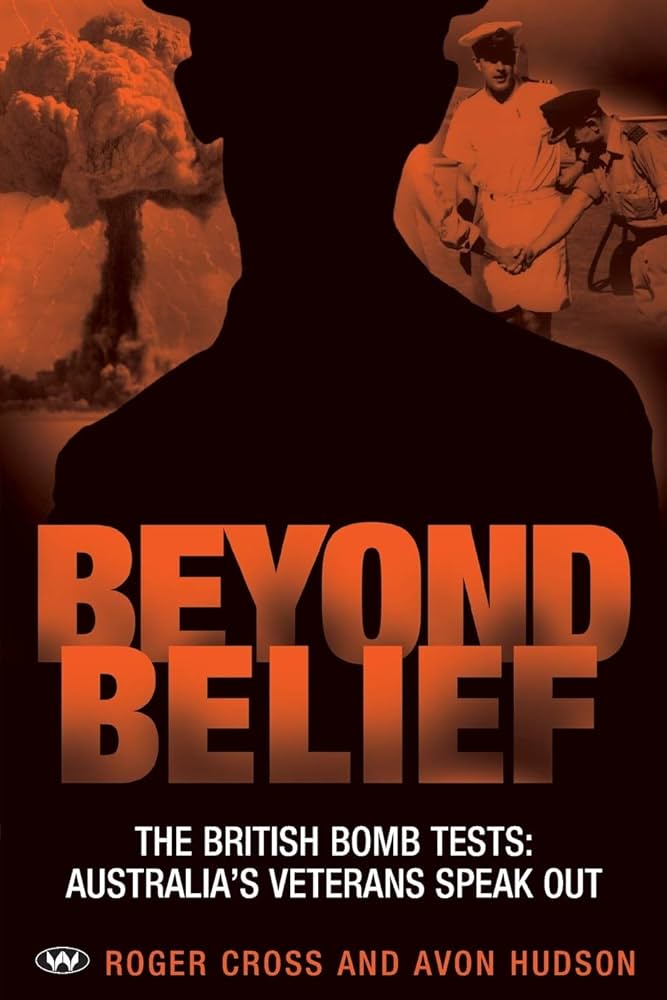
- Free Article: No
- Contents Category: Military History
- Review Article: Yes
- Article Title: Black mist
- Online Only: No
- Custom Highlight Text:
Beyond Belief is yet another account of the atomic tests that were conducted in Australia between 1952 and 1962. It does not deal with nuclear strategy, the technical aspects of nuclear weapons or their delivery systems. It is weak on secondary sources, and there is no reference to archival records. The absence of footnoting makes it of limited use for detailed scholarship. It relies to a great extent on the 1984-85 McClelland Royal Commission for a discussion of the reasons behind the bomb tests, the so-called ‘Black Mist’ incident, the undeclared use of Cobalt in the trials and the poor oversight of the Australian Atomic Weapons Test Safety Commission. The section of the book, based on the writing of Alan Parkinson, dealing with the problems in cleaning up the test sites is useful, but hardly new.
- Book 1 Title: Beyond belief
- Book 1 Subtitle: The British bomb tests: Australia’s veterans speak out
- Book 1 Biblio: Wakefield Press, $27.95 pb, 208 pp
- Book 1 Cover Small (400 x 600):

- Book 1 Cover (800 x 1200):

Safety is the central theme of the work and is central to all the witness accounts, which are grouped chronologically and by the atomic trials. Initially, the problem was one of exposing those who were involved in the conduct of the tests. Later, it was over the saga of the ‘clean-up’ of the sites; and, finally, over the question of whether Australia should build a nuclear waste dump. There were, of course, safety standards during the trials, but these seem to have varied according to the value of the personnel (leaving aside the accidental exposure of Aborigines and a white station hand through carelessness). We are told that scientists from the CSIRO and the Department of Supply carried quartz fibre dosimeters and film badges. The British National Servicemen were also given this equipment, but apparently much of it was faulty. In the later Wewak test area, on the other hand, British troops were ordered into a contaminated area without protective clothing and against the advice of Health Physics personnel – who were protected.
But much of the problem was attributable to the usual bureaucratic bungles. At the Maralinga 1957 tests, the procedures were so flawed that individual personnel were issued with a number of film badges, making precise readings impossible. Doug Rickard worked in the ‘DC12’ building in which the plutonium and uranium that were to be used in the so-called ‘Minor Trials’ was prepared. The process was always accompanied by the risk that poisonous gaseous isotopes could be released into the atmosphere, which indeed occurred. Rickard did not have the benefit of any procedures or documents to redress this situation. It was inexplicable that the British Atomic Weapons Research Establishment (AWRE) teams at Aldermaston failed to pass on any such documents. Similarly, AWRE failed to warn those charting fallout at the Tadje site in 1957 that pellets of highly toxic Cobalt-60 were scattered in the test area. Only after the exposure of the teams did Aldermaston fly out the special lead containers required for the pellets. Moreover, it was a travesty that the Australians had to discover the presence of these pellets by accident.
There is a hint from the witness accounts of more malevolent motives behind the British actions. Australian service personnel allege that they were deliberately exposed to the blasts. There were three groups. Members of the RAAF were exposed by flying directly through the atomic clouds. The use of the Lincoln bombers at the 1952 Monte Bello test has been long documented. In this book, Norman Geschke of 82 Bomber Wing records that he flew through an Operation Totem mushroom cloud at Emu, South Australia, in 1953. Unlike the scientists, the flight crew were given no protective clothing or any decontamination measures. Subsequently, three of Geschke’s crew died from causes assumed to be related to this operation.
Naval personnel record that they were deliberately moved too close to the first test at Monte Bello in 1952. Lieutenant Commander Jerry Latin, on board the HMAS Warrego, recalled the panic aboard as the fear of radioactivity gripped the sloop. Dick Sundstrom, on the aircraft carrier HMAS Sydney, bluntly accuses the British of positioning the ship deliberately in harm’s way, with the result that seventy per cent of the crew died over time from exposure to radioactive fallout. In the second Monte Bello test, in 1956 – roughly four times the Hiroshima detonation – HMAS Karangi was a mere twenty miles away. Bob Dennis, like all the naval personnel, wore nothing but sandals, shorts and a cap as dust settled over the ship. Douglas Brooks, one of twenty-six Australians seconded to HMS Alert, was nine miles away and similarly clothed. Only two of the number is still alive.
Peter Webb, from the Australian Army’s First Battalion, was at Eleven Mile Camp at the Maralinga site in 1956. The tests here had all the hallmarks of a simulated nuclear battlefield – tanks, trucks, slit trenches and personnel – arranged near ground zero. Webb recalls seeing the X-ray of his hand as he shielded his face from the blast. But he could not escape the radioactive dust storm that followed.
Beyond Belief is laced with ample reminders from the authors about the failure of the authorities to protect people from the effects of atomic tests. It provides a selective account from those who participated in one of the most momentous – and least understood – events in postwar Australia.


Comments powered by CComment